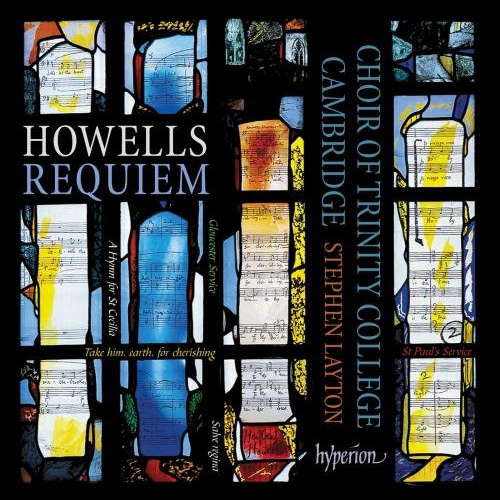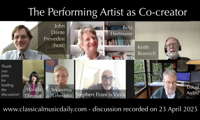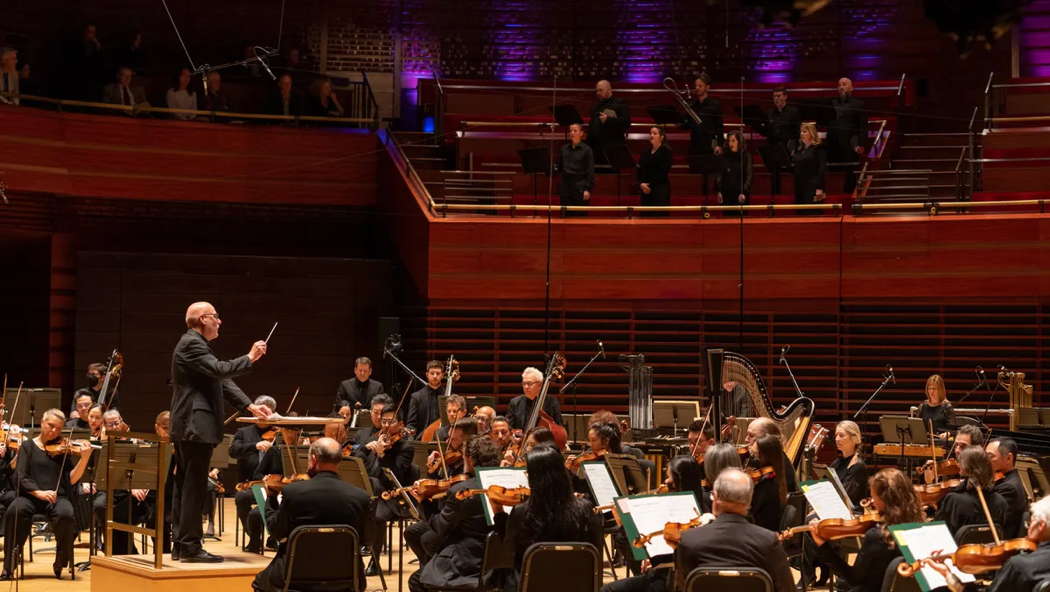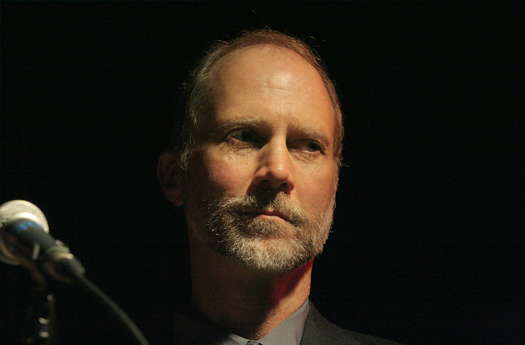 SPONSORED: CD Spotlight. Beautifully Apt - Choral music by Herbert Howells, heard by Robert Anderson.
SPONSORED: CD Spotlight. Beautifully Apt - Choral music by Herbert Howells, heard by Robert Anderson.
All sponsored features >>
 DISCUSSION: What is a work? John Dante Prevedini leads a discussion about The performing artist as co-creator, including contributions from Halida Dinova, Yekaterina Lebedeva, Béla Hartmann, David Arditti and Stephen Francis Vasta.
DISCUSSION: What is a work? John Dante Prevedini leads a discussion about The performing artist as co-creator, including contributions from Halida Dinova, Yekaterina Lebedeva, Béla Hartmann, David Arditti and Stephen Francis Vasta.
ARTICLES BEING VIEWED NOW:
- Régine Crespin
- Hector Berlioz
- Ruth Railton
- Marián Varga
- Marina Koshetz
An Elegy for Mother Earth
ADAM J SACKS listens to John Luther Adams' 'Vespers of the Blessed Earth'
In an inspired pairing, the Philadelphia Orchestra brought together the thoroughbred big bang of modern classical music, Igor Stravinsky's Rite of Spring, with a commissioned world premiere of John Luther Adams' Vespers of the Blessed Earth. Over the course of three concerts from 30 March to 2 April 2023, the orchestra ricochet from pre to post-apocalypse from the quaking of a young earth reawakening to the relentless sighs of one in its death throes. With conductor Yannick Nézet-Séguin sadly absent due to illness, the focus was largely on the dramatic role of the chorus, the conscious multimedia chamber choir known as 'The Crossing' placed not on stage but rather on the rows and rafters behind and above the orchestra.

Donald Nally conducts The Crossing and the Philadelphia Orchestra in John Luther Adams' Vespers of the Blessed Earth. Photo © 2023 Margo Reed
Over the course of five moments, in what read like an elegy for Mother Earth, the choir largely held harmony and melody with meditative silences reaching deep back into the prehistoric memory of the earth. As movement II 'A Weeping of Doves', moved into movement III 'Night Shining Clouds' the downward spirals of a tragic birdsong choir morphed into an orchestra now moving like polluting clouds, a great full accordion of downward doomsday lines. By the fourth movement, 'Litanies of the Sixth Extinction', the realm of pure aesthetics was passed over for the church, a melancholic reading of all the species on the morrow of extinction. The ethereal closing, delivered by soprano Meigui Zhang, replacing soprano Ying Fang, also due to illness, was made not of words, but of the bird call based on a recording of the last of a bird species native to Hawaii.

Chinese soprano Meigui Zhang
A true feat of memory and moral admonishment in music, Adams has blown open the horizon for music as an agent of environmental consciousness.
In almost every respect a counterpoint, Stravinsky's Rite of Spring culminates in the sacrifice of the youngest of a species, a young woman, prophetically enacting the irruption of primal forces of destruction in 1913 that would transform twentieth century Europe into a wasteland of destruction. The whole orchestra as a great harmonium transforms into a barrelling ostinato of percussion.

John Luther Adams
The great Marin Alsop, subbing in, preferred a galloping tempo but kept alive the nuance of strings within Stravinsky's crescendos. While Stravinsky's cubist polyrhythms may have once inspired riots in antebellum Parisian audiences, one wishes Adams' environmental cri de coeur might do the same today.
Copyright © 11 April 2023
Adam J Sacks,
Hong Kong, China



